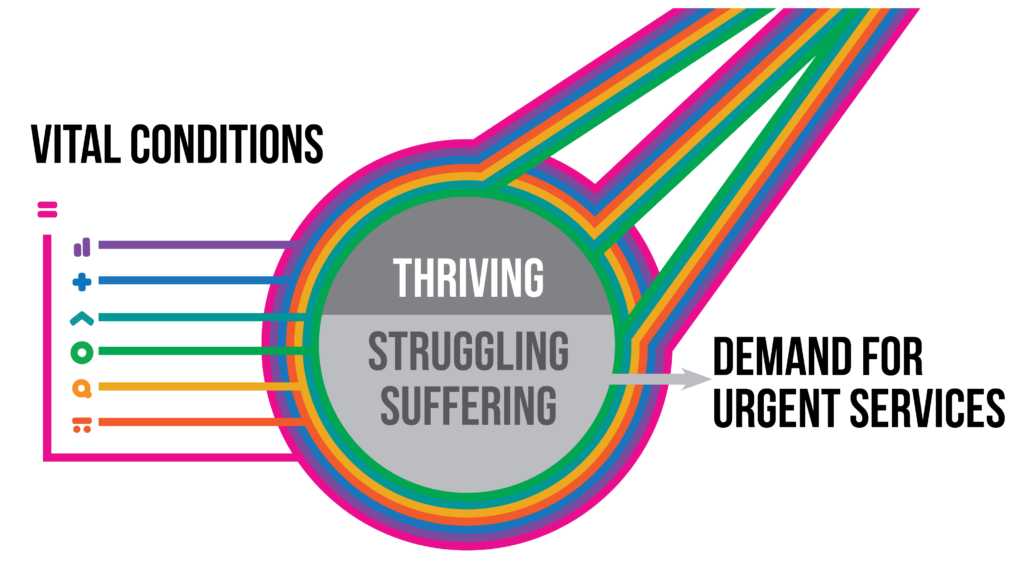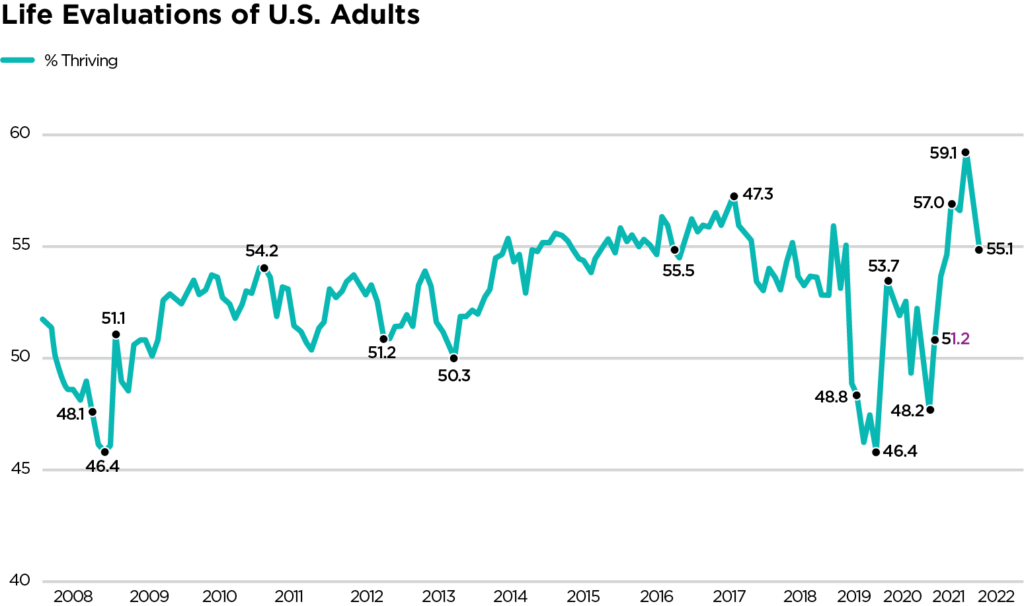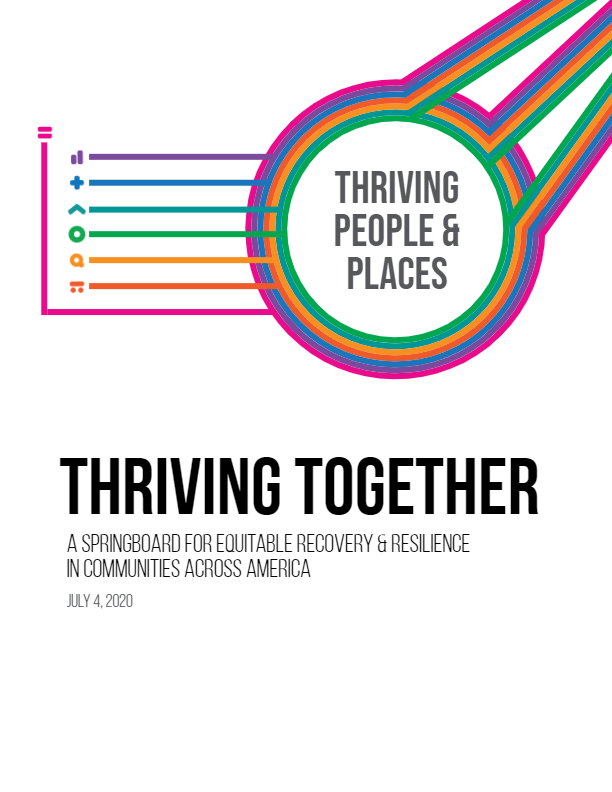
In a time unlike any our nation has previously faced, 2020 began by taking us at whiplash speed through a series of connected, compounding crises—any one of which could take years to recover from.
And while no single measure can possibly capture how we are experiencing these crises, one reliable indicator begins to tell the story: thriving.
Thriving is our north star.
Our best hope for equitable recovery and resilience is to organize local and nationwide action around a single unifying and measurable expectation: All people and places thriving—no exceptions.
Thriving conveys our commitment to create communities where all people have a fair chance to participate, prosper, and reach their full potential.
What is Thriving?
It helps to distinguish two related ways of viewing well-being:
- Personal Experiences: Individual perspectives and experiences that affect how we think, feel, and function, as well as how we evaluate our lives as a whole.
- Vital Conditions: Properties of places and institutions that we all depend on to reach our potential.
Our freedom to thrive depends on having a consistent set of vital conditions, such as clean air, fair pay, humane housing, early education, routine health care, and other pragmatic necessities. Personal experiences may rise and fall from birth to death. However, vital conditions persist over generations.
Each vital condition is distinct and indispensable. Together, they form an interdependent system that shapes opportunities for people and places to thrive (represented by icons and colors in the graphic below).

If any vital condition is denied or otherwise unfulfilled—or if there is a sudden shock, such as the emergence of a novel pathogen—serious adversity can accumulate, revealing itself in excess rates of illness, unemployment, housing distress, food insecurity, loneliness, and more.
Mounting adversity, in turn, drives the demand for urgent services, such as acute care for illness or injury, addiction treatment, crime response, environmental cleanup, homeless services, unemployment support, and food assistance.
Urgent services are necessary for alleviating short-term suffering. But temporary efforts to help people in crisis cannot increase the experience of thriving. Nor could those services counter an entrenched adversity spiral that is fueled by inadequate vital conditions and ongoing legacies of trauma and exclusion.
Cantril’s Ladder
Our single best measure of thriving, struggling, and suffering is Cantril’s Ladder. This simple two question scale asks people to rate their well-being on a ladder from 0 (worst possible life) to 10 (best possible life), both now and in five years. When combined, those ratings reveal who feels they are thriving, struggling, or suffering.
This measure is routinely tracked both across the US and around the world by groups such as Gallup, the Organization for Economic Cooperation and Development, and the World Happiness Report, which enables standardized comparisons over time and geography. Gallup alone has polled more than 3 million people over the last decade.

Thriving, as measured by Cantril’s Ladder.
Adapted from Gallup.
Over the past several decades, the art and science of designing systems for thriving has matured into a vibrant frontier of knowledge, policy, and practice. Other countries, as well as a growing group of cities and major institutions, have embraced equitable well-being as their chief concern, backed by budget authority and transparent living standards. More remains to be discovered, but the work of advancing well-being for people and places is becoming increasingly practical.
What Will It Take for Everyone to Thrive Together?
Vital Conditions for Well-Being and Justice
Vital conditions are the properties of places and institutions that we all depend on to reach our full potential. Vital conditions shape the exposures, choices, opportunities, and adversities that we each encounter throughout our lives.
Each vital condition is distinct and indispensable. Together, they form an interdependent system that shapes opportunities for people and places to thrive.
Momentum for Thriving Together
We aspire to become thriving people in a thriving world. American innovators continue to expand people’s freedoms to thrive through impressive efforts to secure the vital conditions that make prosperity possible.
Leaders in communities, organizations, and networks across the country are beginning to apply the Thriving Together ethos to their work. Discover how these stewards are advancing equitable well-being.
Federal Long-Term Recovery and Resilience Plan Development: Mid-Course Update
Enhancing the Capacity of the Mental Health and Addiction Workforce: A Framework
The Springboard
In eight weeks from May through June 2020, more than 100 people and organizations diverted their daily work to help craft Thriving Together: A Springboard for Equitable Recovery and Resilience in Communities Across America.
We created this Springboard to leverage the immense resilience in America’s communities. It describes how we see the current situation and what we could do, together, to organize local and nationwide action around a single, unifying—and measurable—expectation: All people and places thriving—no exceptions.
Explore the Springboard and learn more about our community of contributors.

Living Library
During the development of the Springboard, a diverse set of tools, stories, perspectives, policies, and guides were identified as useful in moving toward equitable well-being. We continue to curate resources from our partners, colleagues, and friends.
